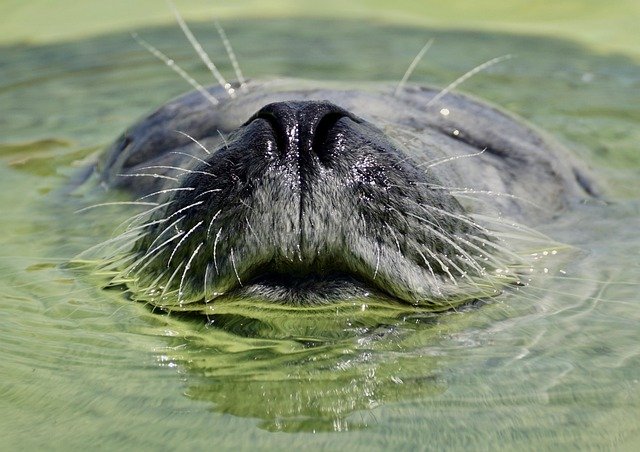Underwater Whiskers: The Sensory Marvel of Seals
Dive into the fascinating world of seal sensory perception as we explore the remarkable adaptations that allow these marine mammals to thrive in their aquatic environment. From hunting in murky depths to navigating treacherous ice flows, seals rely on an extraordinary array of sensory tools, with their whiskers standing out as a true marvel of nature's engineering.

The Evolution of Seal Whiskers
The journey of seal whiskers began millions of years ago when the ancestors of modern seals first ventured into the water. As these early pinnipeds adapted to an aquatic lifestyle, their whiskers evolved to become increasingly sensitive to underwater vibrations. Over time, natural selection favored individuals with more advanced vibrissae, leading to the highly specialized sensory organs we see in seals today.
Anatomy of a Sensory Marvel
Seal whiskers are far more complex than the whiskers found on terrestrial mammals. Each vibrissa is embedded in a specialized follicle surrounded by blood vessels and densely packed with sensory nerves. The whiskers themselves are flattened and feature a unique beaded structure that enhances their sensitivity to water movements. This intricate design allows seals to detect even the faintest disturbances in the water, giving them a three-dimensional awareness of their surroundings.
Hydrodynamic Superpowers
The true power of seal whiskers lies in their ability to detect and interpret hydrodynamic trails left by swimming fish. As a fish moves through water, it creates a vortex trail that can persist for several minutes. Seals use their whiskers to detect these trails, effectively “seeing” with their sense of touch. This remarkable ability allows them to track prey in complete darkness or in murky waters where vision is limited.
Beyond Hunting: Navigation and Communication
While hunting is a primary function of seal whiskers, these sensory organs serve multiple purposes. Seals use their vibrissae to navigate through complex underwater environments, detect changes in water currents, and even communicate with other seals. Some species have been observed using their whiskers to explore objects and surfaces, much like humans use their hands to feel textures.
Technological Inspiration
The incredible sensory capabilities of seal whiskers have not gone unnoticed by engineers and roboticists. Researchers are now developing artificial whiskers inspired by seal vibrissae for use in underwater robots and sensors. These biomimetic devices could revolutionize underwater exploration, search and rescue operations, and marine research by providing enhanced sensory capabilities in challenging aquatic environments.
Conservation Implications
Understanding the importance of seal whiskers has significant implications for marine conservation efforts. As human activities continue to impact ocean ecosystems, protecting the habitats where seals hunt and navigate becomes increasingly critical. Noise pollution, in particular, may interfere with the delicate sensory systems of seals and other marine mammals, highlighting the need for comprehensive conservation strategies.
The Future of Whisker Research
As technology advances, scientists are developing new methods to study seal whiskers in greater detail. High-speed cameras and sophisticated computer models are allowing researchers to visualize and analyze the precise movements of vibrissae as seals hunt and navigate. These studies promise to reveal even more about the remarkable sensory capabilities of these marine mammals, potentially unlocking new insights into animal perception and inspiring further technological innovations.
In conclusion, the underwater whiskers of seals represent a fascinating example of nature’s ingenuity. These specialized sensory organs have evolved to give seals a unique advantage in their aquatic environment, allowing them to thrive in conditions where other predators might struggle. As we continue to unravel the mysteries of seal whiskers, we gain not only a deeper appreciation for these remarkable creatures but also valuable insights that could shape the future of underwater technology and marine conservation efforts.





